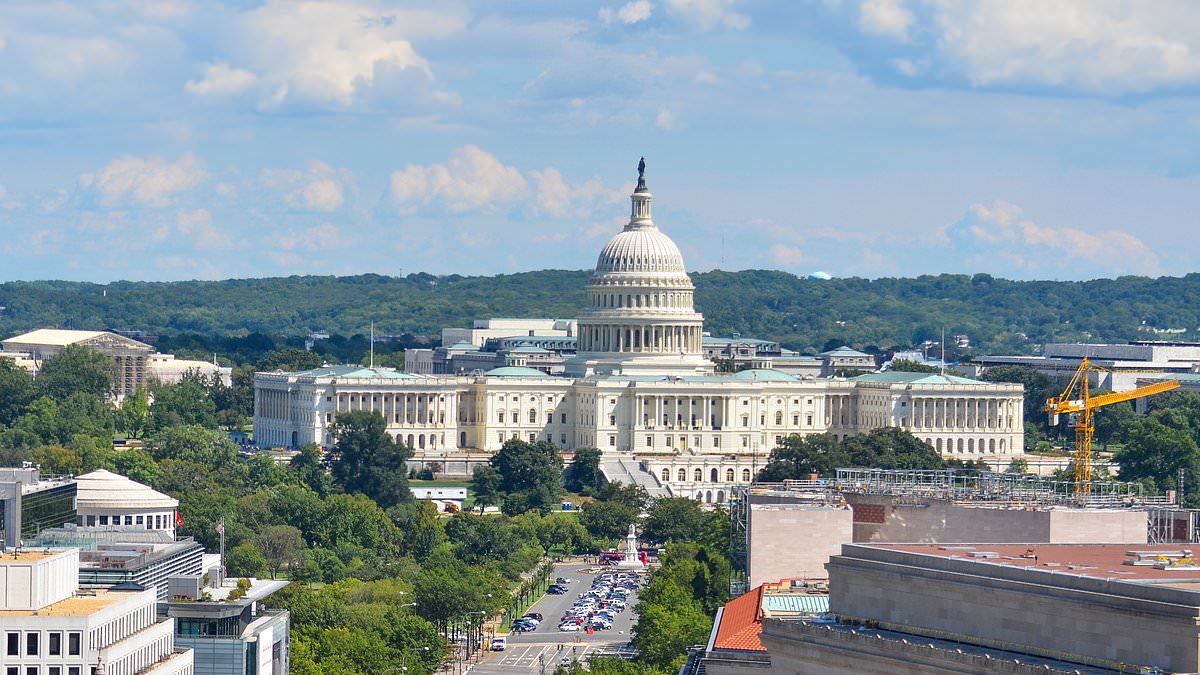A new study has found that Washington, DC, has experienced the largest increase in its rat population, and their numbers are only getting larger.
Published in Science Advances, the study analyzed public complaints and inspection data from 16 cities worldwide, marking the first time researchers have directly connected rat population growth to global warming patterns.
‘We found these cities that have increasing warming trends over the last 50 years or so also have faster number of rats,’ Jonathan L. Richardson, an associate professor at the University of Richmond and the study’s lead author, told CBS News.
Washington D.C., San Francisco, Toronto, New York City and Amsterdam exhibited the five strongest positive trends, followed by Oakland, Buffalo, Chicago, Boston, Kansas City, and Cincinnati.
The magnitude of trends varied widely; for instance, the surge in the nation’s capital – previously called a ‘rat-infested s**thole’ by President Trump – was three times greater than in Boston and 150 percent of the surge in New York City.
In contrast, Tokyo, Louisville and New Orleans showed declining rat populations, with New Orleans experiencing the most significant decrease over the study period.
Dallas and St. Louis did not show notable changes.
Several factors contribute to the rise.

A new study has found that Washington D.C. has experienced the largest increase in its rat population

The study analyzed public complaints and inspection data from 16 cities worldwide, marking the first time researchers have directly connected rat population growth to global warming patterns
Cities with denser human populations and greater urbanization provide ideal conditions for rats.
Warmer temperatures also extend their foraging periods, allowing them to remain above ground longer.
‘For a rat, that means they don’t have to stay underground in their burrows,’ Richardson said.
This increased activity has reproductive consequences. Because rats’ physiology is highly sensitive to temperature, warmer conditions cause females to reach sexual maturity earlier, leading to more frequent pregnancies and larger litters.
Expanding rat populations pose significant challenges for cities, affecting both infrastructure and public health.
The study noted that living with rats ‘impacts people and their psyche.’
‘They transmit and carry more than 50 zoonotic pathogens and parasites that can make people sick,’ said Richardson.
Controlling rat populations is becoming more challenging and costly, with cities spending an estimated $500 million each year on eradication efforts.

Pictured: A graph showing the estimating changes in rat numbers for 16 cities that have long-term data on public rat complaints and municipal inspections. Positive z values represent increasing rat numbers over time, and negative values are decreasing rat trends.

Rising rat populations correlate with the increase in average temperatures in each city, surpassing long-term baseline temperature levels
New York City even appointed its first-ever ‘Rat Czar’ in 2023, yet CBS New York found rat sightings had still increased by over 7 percent since the Adams administration launched its ‘war on rats’ in 2022.
Despite dedicated pest control efforts, rats have proven to be remarkably adaptable.
Richardson said rats are ‘a very smart animal, and it is, you know it’s remarkable at how good it can be at avoiding what we’re using to try to control it.’
The study suggests that to effectively manage rat populations, cities need to allocate larger budgets and increase staffing for rodent control teams.
Richardson emphasizes that cities must partner with pest management companies, where technicians should implement integrated pest management strategies.
Additionally, cities must focus on eliminating the conditions that make environments more conducive to rats.
